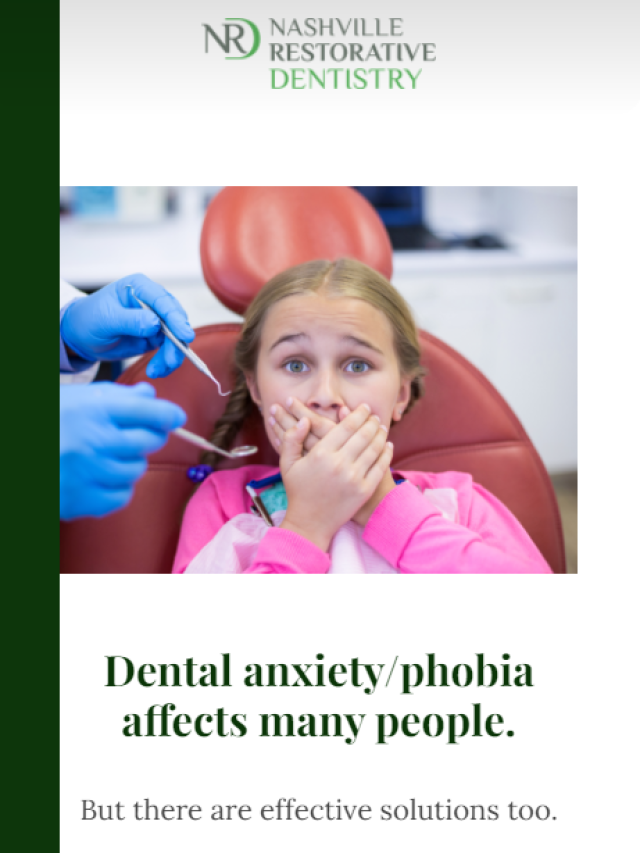We use modern techniques, advanced technology, and safe materials to provide you with expert care before, during and after your surgery.
At Nashville Restorative Dentistry we do everything in our power to make sure that you are comfortable and confident with your options to pursue a healthier and pain-free life, whether that means extracting a tooth, grafting to prepare for a dental implant, or repairing areas of gum recession.
- First, we make sure you are part of the process, walking you through all of your options and empowering you to choose the treatment plan that will best accomplish your goals and priorities.
- Second, we focus on keeping you comfortable and relaxed during your procedure, offering several sedation dentistry options if desired.
- Finally, we always provide the supportive follow up care that you deserve – utilizing natural products to keep you comfortable and staying in touch with you to ensure you have everything you need and are healing well.
Learn more about the oral surgery services Dr. Jones and Dr. Estes offer patients in Nashville, Brentwood, Franklin, and Cool Springs.
Wisdom Tooth Extraction
Wisdom tooth extractions are often a preventative measure that can save you from future cavities, infection, and pain. This is a common procedure we perform because many patients’ jaws aren’t adequately sized to allow their wisdom teeth to fully develop and grow into an ideal position.
Pinhole Gum Grafting
Gum recession can be unattractive and uncomfortable, but it can also be detrimental to your long-term oral health. The risk from gum recession comes from the exposure of the tooth root. Pinhole Gum Grafting is a less-invasive, modern technique for treating unattractive gum recession and room sensitivity, with no incisions or sutures and quicker recovery than traditional grafting.
Platelet Rich Fibrin (PRF) Therapy
A natural and effective therapeutic process for reducing your infection risk and helping you heal more quickly after surgery. PRF is extremely versatile and can be used in a variety of dental surgeries.
Sinus Lifts / Bone Grafts
In some cases, your natural anatomy or the way you’ve healed following tooth removal leaves an area where there isn’t enough bone width or height to securely place a dental implant. Sinus lifts, bone grafts, and socket preservation grafts are sometimes necessary procedures to create an adequately-sized volume of healthy bone for the stable and effective placement of dental implants.

Request a FREE Virtual Consult Today
Get answers about improving your smile in three easy steps!
Upload a smile selfie or photo of an area of concern
Let us know what you want to change and we will create a personalized video with recommendations.
Upload a smile selfie or photo of an area of concern
Experience excellence in dental care today.
You shouldn’t have to worry about your mouth or let unpleasant past dental experiences prevent you from living the life you want.
Reviewr Name
Michelle W.
Patient Testimonial
Issue: Spacing between the front teeth and an uneven tilt to the smile.
Solution: Short term orthodontics to evenly spread out the space between the teeth followed by veneers across the eight front teeth to create a level smile with color consistency and no spaces.








